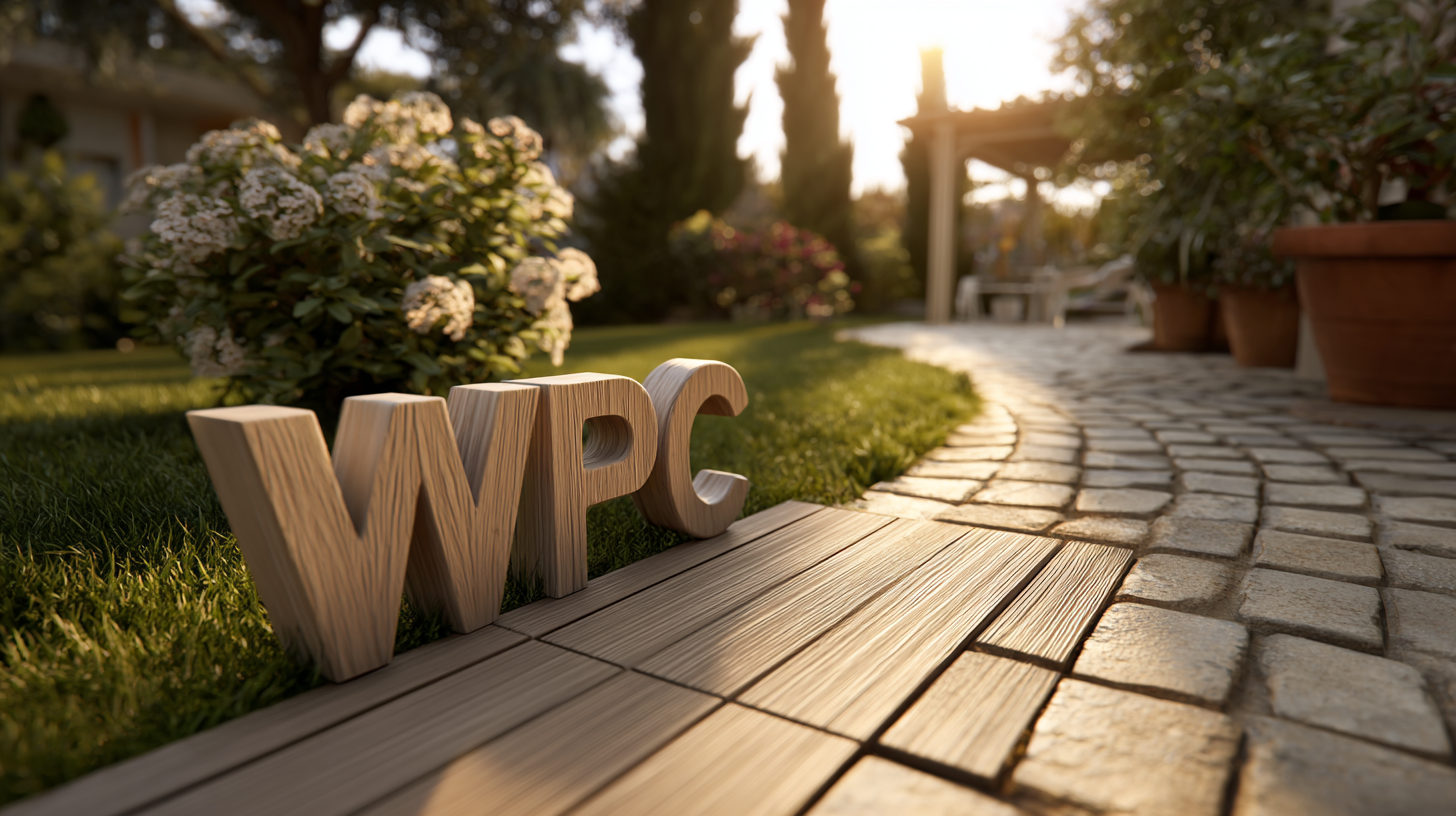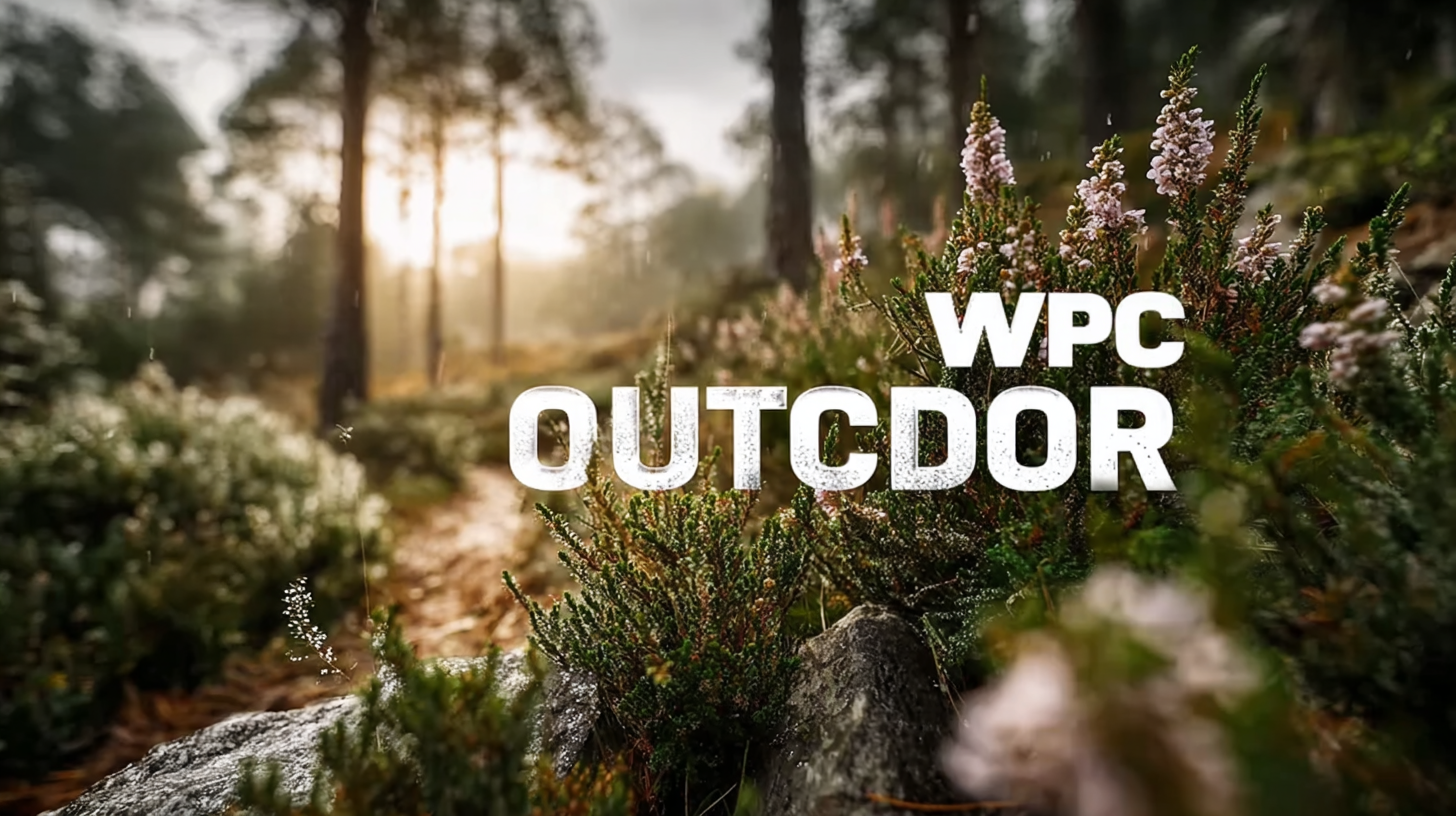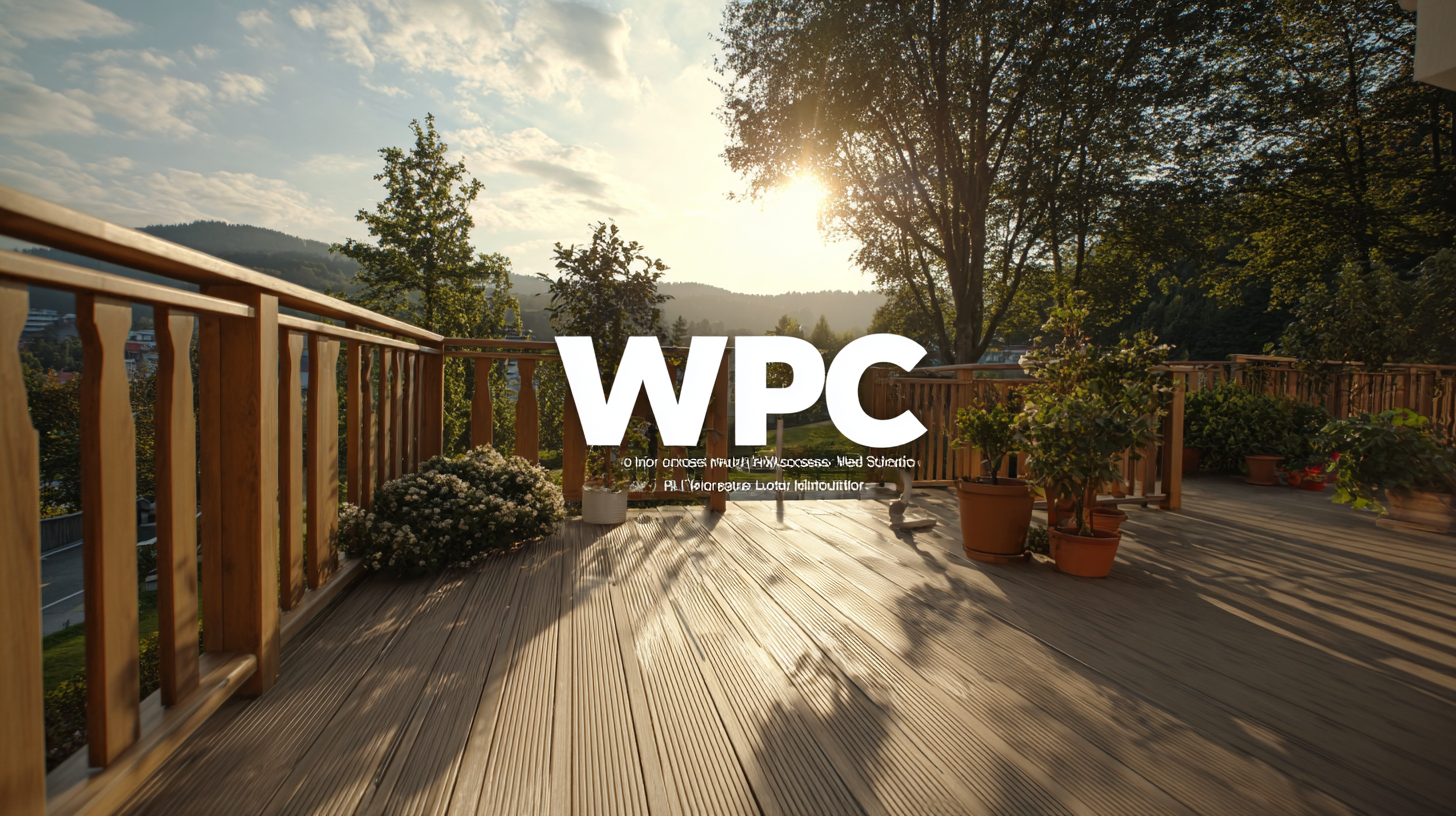Shandong Xiangying New Materials Technology Co., Ltd.
Shandong Xiangying New Materials Technology Co., Ltd.
As the demand for sustainable and innovative landscaping solutions grows, WPC outdoor products have emerged as a game changer in modern landscaping. Wood-plastic composites (WPC) combine the durability of plastic with the aesthetic appeal of wood, making them an ideal choice for homeowners and landscape professionals alike. According to a recent market research report by MarketsandMarkets, the wood-plastic composites market is expected to reach $9.2 billion by 2025, growing at a compound annual growth rate (CAGR) of 11.4%. This growth is largely driven by the increasing preference for eco-friendly materials that require minimal maintenance while providing a high degree of design flexibility. In this blog, we will explore the characteristics and applications of various WPC outdoor solutions, highlighting their essential role in transforming modern landscapes into stunning, functional spaces.

When transforming outdoor spaces, the choice of materials plays a pivotal role in achieving a harmonious blend of aesthetics and functionality. Wood-Plastic Composite (WPC) materials have emerged as a frontrunner in modern landscaping due to their innovative features. These materials combine the natural beauty of wood with the durability of plastic, making them resistant to weathering, rotting, and pests. This fusion not only enhances the lifespan of outdoor installations but also reduces the need for frequent maintenance, appealing to homeowners seeking hassle-free solutions.
Moreover, WPC materials are environmentally friendly, as they are crafted from recycled wood fibers and plastics. This sustainable approach helps minimize waste and promotes eco-conscious landscaping. The versatility of WPC allows for various designs and applications, from decking and fencing to garden furniture. With a range of colors and textures available, WPC can mimic the look of traditional wood while offering superior performance. As outdoor spaces evolve into extensions of living areas, WPC materials provide the perfect solution for creating stylish, functional, and sustainable landscapes.
| Feature | Description | Benefits |
|---|---|---|
| Weather Resistance | WPC materials are engineered to resist fading, warping, and moisture. | Long-lasting aesthetics and reduced maintenance costs. |
| Eco-friendly | Made from recycled wood fibers and plastic that reduce waste. | Sustainable choice for environmentally conscious consumers. |
| Versatility | Available in various colors, textures, and styles that mimic natural wood. | Flexible design options suitable for any outdoor setting. |
| Low Maintenance | Does not require staining or sealing like traditional wood. | Saves time and money on upkeep. |
| Slip Resistance | Surface texture designed for enhanced traction. | Safer for children and pets in wet conditions. |
The incorporation of Wood Plastic Composite (WPC) in modern landscaping projects is not just a trend; it represents a significant step towards sustainable landscape design. WPC materials are known for their durability and low maintenance needs, making them an attractive choice for outdoor solutions. According to a recent industry report by the Freedonia Group, the demand for WPC products in landscaping is projected to grow by over 8% annually through 2025, indicating a strong shift towards eco-friendly materials in construction and landscaping sectors.
One of the key sustainability benefits of using WPC is its reduced environmental footprint. WPC is made from recycled wood fibers and plastics, which diverts waste from landfills and lowers the reliance on virgin materials. A study by the Forest Stewardship Council found that using WPC can reduce deforestation rates, as it offers a viable alternative to traditional timber. Additionally, WPC products are designed to withstand harsh weather conditions without the need for chemical treatments, leading to a healthier environment overall.
**Tips for Sustainable Landscaping:**
To maximize the benefits of WPC, consider combining it with other sustainable practices, such as using native plant species in your landscape design. This not only enhances biodiversity but also reduces water usage. Furthermore, investing in high-quality WPC products can lead to long-term savings, as their durability minimizes the need for replacements and repairs, ensuring your landscaping remains both beautiful and sustainable for years to come.
Wood Plastic Composites (WPC) have emerged as a versatile and sustainable option in modern landscaping, offering immense design flexibility while complementing various landscape styles. Unlike traditional materials, WPC solutions are engineered to mimic the aesthetic of natural wood while providing enhanced durability and resistance to environmental factors. According to a recent market report, the global WPC market is projected to reach $9 billion by 2025, indicating a significant shift towards these innovative materials in outdoor applications.

The integration of WPC in landscaping projects allows for seamless transitions between different design elements, catering to both contemporary and traditional aesthetics. With their capacity to be molded into various shapes and finishes, WPC products can effortlessly blend with existing architectural features or create striking focal points. Moreover, their environmentally friendly profile makes them an appealing choice for eco-conscious consumers, as WPC products utilize recycled wood fibers and plastics, significantly reducing the carbon footprint compared to conventional timber. This design versatility opens up endless possibilities for homeowners and landscapers alike, reinforcing WPC solutions as an essential component of modern outdoor designs.
When it comes to outdoor landscaping, maintaining the appearance and functionality of Wood Plastic Composite (WPC) solutions is crucial. According to the Global WPC Market Report, the demand for WPC in outdoor applications is projected to grow at a CAGR of 10.8% from 2021 to 2026. This increase highlights the importance of longevity and aesthetic appeal in outdoor installations. Regular maintenance plays a pivotal role in ensuring that WPC decks, fences, and siding do not lose their charm and durability over time.

One of the key maintenance insights involves routine cleaning. Experts recommend using a soft bristle broom and a mild soap solution to remove dirt and debris, aiming for a clean surface at least twice a year. A study by the American Society for Testing and Materials (ASTM) emphasizes that proactive cleaning can significantly reduce the risk of staining and fading, preserving the WPC's original color. Furthermore, applying a protective sealant with UV inhibitors every 1-2 years not only enhances the visual appeal but also extends the lifespan of the materials, making them a sustainable choice for modern landscaping. By implementing these maintenance strategies, homeowners can ensure their WPC outdoor solutions remain as stunning as the day they were installed.
When designing a modern landscape, cost-effectiveness is a critical consideration. Incorporating Wood-Plastic Composite (WPC) into your outdoor spaces allows for a sustainable yet stylish approach to landscaping. WPC offers the aesthetic of traditional wood without the high maintenance costs, making it an ideal option for homeowners and landscapers alike. By using WPC in decking, fencing, and garden structures, you can create a cohesive and visually appealing environment that can withstand the elements while remaining budget-friendly.
Another effective strategy is to take advantage of WPC's versatility in design. Its lightweight nature and ease of installation mean you can experiment with various layouts and styles without significant investment or labor costs. Whether you are looking to create outdoor seating areas or decorative garden features, WPC can be tailored to fit any landscape aesthetic. Moreover, the durability of WPC reduces the need for frequent replacements, further enhancing its cost-effectiveness over time. By thoughtfully integrating WPC into your landscape design, you not only save on upfront costs but also on long-term maintenance, ensuring a beautiful and sustainable outdoor space.
